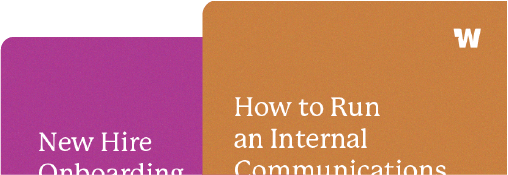How to engage frontline employees

According to a Gallup study, only 15 percent of worldwide frontline workers around the world feel engaged in their work.
Pair that up with employee turnover data, and you start to get a really startling, serious picture about the state of frontline employee engagement. According to the Bureau of Labor Statistics, more than 50 percent of all new hourly employees quit or are terminated within six months of being hired. (Recent reports, especially in retail and food service, estimate it to be even higher).
These are all statistics and issues that you’re likely acutely aware of. So, how can you turn the tides?
For starters: don’t treat frontline workers as if they’re constantly replaceable. After all, you’re investing a lot of time into hiring, training, and onboarding these employees.
In every case, they’re either a.) the face or b.) the backbone of your organization. If you engage these employees thoughtfully, you can get a lot of valuable feedback and insights and significantly improve your retention rates…saving your company a significant amount of cash, and creating a better company culture in the process. Plus, research suggests that organizations who connect frontline employees can also achieve significantly faster growth and improved productivity.
(And in the end, if it’s not a great fit, it is highly likely that you can find a replacement — but nobody wants to feel that way.)
Other than taking a moment for the above mindset shift, there are five major ways to engage a frontline or deskless employee:
- Through their direct supervisor
- Through the company’s culture
- Through technology
- Through feedback
- Through internal and external marketing
Engaging frontline employees through their direct supervisor
The original Harvard Business review article spends quite a few pages championing direct supervisors as the opinion leaders in an organization, and in many instances, we agree! As they say: “Frontline supervisors greatly influence the attitudes and behaviors of others; they are critical to the success of any change effort.”
To be honest, this isn’t unique to frontline workers; we all know that managers play a pivotal role in employee engagement.
According to the Gallup Business Journal, 70% of the variance in team engagement across business units is explained by the quality of the manager. And in almost every report out there, it’s cited as the number one factor for employee engagement.
No one has a bigger influence on an employee’s day-to-day interactions, processes, and operations than the managers on the ground with them…frontline or not.
If you find a team that’s struggling, start with their manager…and make sure your managers are prepared to shoulder that kind of responsibility. Invest in training, communications tools, and resources to ensure they can do their jobs well (the bulk of which is engaging their teams and generating results for the business).
One other instant place to focus: make sure frontline employees are recognized and appreciated throughout the organization. Often, these workers have to deal with a lot of the downsides of customer service or hard labor. Whether you honor them through a handwritten note (our favorite), an Employee of the Month award, small gifts, a shoutout in an all-company meeting, catered surprises, thoughtful feedback, a day off, etc., take the time to check in and ensure that they are being regularly thanked for their hard work.
There’s no time where this is more critical than during a worldwide pandemic, when so many of these frontline employees are risking so much to keep us safe and help ensure that the rest of us can access essential items and services.
Engaging frontline employees through the company’s culture
There are mixed reviews as to whether or not frontline employees respond to the mission, values, and culture of a company…and the truth is, they might not, at first. However, it’s absolutely critical for employee engagement and retention. Sure, they might have taken the job for the paycheck, but if you’re competing entirely on the basis of hourly pay or salary alone, you’ll simply become a commodity.
Sure, employees might be joining the team just for the job, but they’ll stay because they care. This is constantly referenced in articles about the millennial and Gen Z workforces; according to Deloitte, seventy-six percent of millennials view business as a source of powerful and positive social impact. It’s one of the top five things millennials want from their work. And this isn’t just for Silicon Valley tech companies; organizations across every industry are learning that company culture can be a key differentiator, especially for frontline or labor-intensive roles.
Engaging frontline employees through technology
Frontline or deskless workers are often siloed from the rest of their company. Connecting these employees with each other (as well as those who are in the office) is incredibly beneficial for both employee engagement and organizational performance.
Technology can give these employees a sense of place and a sense of community. Even if they don’t get much face time with their coworkers, you can connect these employees with the right product.
This can be achieved by selecting a tool that can:
- Send employees messages on the communications channel or device they prefer (in many cases, via their cell phone)
- Provide an asynchronous place for frontline employees to catch up during breaks/after shifts (and add their own comments and voice to the conversation)
- Encourage two-way communication between leadership teams and frontline employees
- Keeping messages brief and engaging (with embedded videos, surveys, etc.)
At the end of the day, you really just want a tool that can allow you to keep these frontline employees informed and engaged; you don’t want them to constantly have to hear company news through the grapevine or feel like they’re disconnected from HQ all the time.
Workshop excels as a frontline employee communications solution. It’s mobile-friendly and integrates with multiple channels, so you can create emails, texts, Slack messages, intranet posts, and so much more. Plus, with Workshop, you can now generate a QR code for any email with a quick click, and use that QR code for tabletop signage, office displays, breakroom posters, you name it! It’s a one-stop shop for planning, targeting, publishing, and measuring your internal communications. Learn more about Workshop here.
Engaging frontline employees through feedback
One of the easiest ways to engage frontline employees is consistently overlooked in almost every business we’ve come across: bring them into the fold and get their feedback. Frontline and deskless employees are often your direct connection to customers, and/or your eyes and ears on the floor. Value their unique insights and, quite simply, ask them for their feedback.
These employees are ready and willing to give advice, too. In a Medallia study, 51 percent of frontline employees said they had suggestions for improving customer satisfaction at least quarterly, and 22 percent said they had feedback to share weekly or even daily.
Yet nearly 20 percent said their organizations never asked for their thoughts on improving customer service, and a third said they were asked for their opinions once a year or less. Decades of research have shown that employees are highly accurate in their assessments of customer satisfaction and the quality of their company’s service. If you give them more opportunities to share their insights and suggestions, you’ll be far better prepared to understand and respond to your customers…and the competitive advantages and success you achieve as a result could be astronomical.
There are a few great channels to solicit these thoughts and opinions:
- Creating an employee suggestion box or offer an anonymous Q&A
- Encouraging frontline managers to ask for it in one-on-ones
- Offering skip-levels or having senior leadership do listening tours
- Using communication tools such as Slack or Workshop
- Running employee opinion surveys
The feedback loop doesn’t stop at customer service, either. Employees on the front lines are uniquely positioned to identify common issues across the business. Not only that, but they can provide context, help identify the root cause(s), and provide ideas for potential solutions.
The best part? Not only are you gaining the benefits of all this feedback and insight, but the employee feels more engaged as a result: they’re making a meaningful impact, helping the company achieve its mission and vision, and improving the business’ performance.
Engaging frontline employees through internal and external marketing
Internal marketing is the promotion of the mission, values, objectives, brand, and offerings of a company to the people within it.
There are all kinds of programs, initiatives, and events that can fall into this category: the company newsletter, all-hands meetings, quarterly retreats, internal product launches, celebrations, memos, OKRs, videos, employee resource groups, big announcements, new hires, swag, presentations, employees’ social media posts, you name it.
Ultimately, though, it’s obvious to all marketers that the lines between internal and external marketing are becoming blurrier and blurrier by the tweet. Investing in the way you communicate to your employees and putting intentionality and resources behind it can have an incredibly positive impact.
Just take a look at all of the trends that naturally feed into a robust internal marketing strategy, like employer branding, thought leadership, and brand advocacy. At large-scale organizations, we’ve even seen everything from massive employee conferences to internal podcasts.
One of our favorite examples comes from Sherwin-Williams (though they ultimately didn’t handle it the right way). One of their frontline employees, Tony Piloseno, had a massively popular TikTok account that was entirely dedicated to mixing paint. Instead of embracing the account as a digital marketing strategy, the company chose to fire Tony for using social media on company time. (He was ultimately hired by a competitor.)
Another way we’ve done this in the past is to create a blog entirely for stories about our company culture and employee experiences. Life at Flywheel is an archive of some of the best internal marketing efforts from our previous company, from the origins of our branded two-day company retreat to our massively successful mentoring program for managers.
Similarly, incredible customer experiences can go viral. Giving frontline employees the leeway to share those amazing stories on social media can drive unbelievable results for your brand, and internally, it can be a great source of pride for the entire team. (We have an #awesome-stuff channel in Slack dedicated just for this purpose.)
And every time one of your employees shares a company post or highlights a positive part of their work, that’s bolstering your organization’s reputation. The benefits from these word-of-mouth experiences can be huge, from assisting with recruiting efforts to bringing in new customers. (Keep in mind that negative customer and employee experiences can also have a viral effect, so it’s nice to have a bank of public-facing stories that showcase the positives.)
Use your internal communications campaigns as regular opportunities to shine a spotlight on positive stories about what employees are doing in different locations, branches, or stores. Use your newsletter, all-hands meetings, and team stand ups to remind people that great things are happening in their organization every day, and that they all can play a part in contributing to that positive company culture.
This article is part of a larger guide, “Reaching, Engaging, and Changing Frontline Employees.” Download the full guide here, or click through the blog post series.







